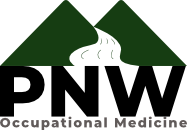In today’s fast-paced work environment, ensuring the health and well-being of employees is paramount. Occupational health services play a critical role in maintaining a safe and productive workplace. Whether you’re a small business owner or managing a large corporation, understanding these essential services can help you create a healthier workplace.
1. Pre-Employment Health Screenings
Pre-employment health screenings are a foundational aspect of occupational health services. These screenings ensure that new hires are physically and mentally fit for the job. They can identify any medical conditions that may require accommodations, helping to minimize workplace risks and maximize productivity from the start. Furthermore, these assessments can also be customized based on the specific demands of the job. For instance, roles that involve heavy lifting might necessitate more stringent physical exams.
While some might view these screenings as an additional step in the hiring process, they are crucial for long-term employee health. By catching potential health issues early, companies can save on future medical costs and reduce the risk of work-related injuries. Moreover, these screenings can foster a culture of wellness from the outset, making it clear that the company takes employee health seriously. They are not just about compliance but about looking after the well-being of your workforce.
2. Regular Health Check-Ups
Regular health check-ups offer numerous benefits to both employees and employers. Routine monitoring can help in the early detection of chronic conditions such as hypertension and diabetes, which might otherwise go unnoticed. Early detection and management of such conditions can prevent serious health issues, decrease absenteeism, and reduce overall healthcare costs for the company.
For employers, regular health check-ups can translate into a more productive workforce. Employees who maintain good health are generally more engaged, less likely to take sick leave, and able to focus better on their tasks. Offering regular check-ups can also boost employee morale, as it shows that the company cares about their overall health and well-being. In turn, this can improve job satisfaction and reduce turnover rates.
3. Mental Health Support
Mental health is just as crucial as physical health, and providing access to mental health support can create a more supportive and understanding work environment. Services like counseling and stress management workshops can help employees navigate the pressures of the workplace. Recognizing and addressing mental health issues early can prevent them from escalating into more severe problems such as burnout or depression.
Incorporating mental health resources into occupational health services demonstrates an organization’s commitment to holistic employee well-being. It can reduce stigma around mental health, encourage employees to seek help when needed, and foster a more inclusive corporate culture. Moreover, a mentally healthy workforce is often a more productive and happier workforce, contributing to long-term business success.
4. First Aid and Emergency Response Training
First aid and emergency response training equip employees with the necessary skills to handle workplace emergencies effectively. Such training can significantly reduce the severity of workplace injuries and improve overall safety by enabling immediate, appropriate responses to emergencies. Employees trained in first aid can provide crucial assistance to colleagues during the critical moments before professional help arrives.
Additionally, having staff trained in emergency response can enhance your company’s safety culture. It can also minimize downtime during emergencies and demonstrate to employees that their safety is a priority. Offering regular refresher courses ensures that everyone remains up-to-date on the latest safety practices and can respond effectively when needed.
5. Ergonomic Assessments
Ergonomic assessments play a significant role in creating a work environment that minimizes physical strain and maximizes productivity. These assessments can identify potential hazards related to workplace design, such as improper desk setups or repetitive motion tasks. By making simple adjustments, like providing ergonomic chairs or adjustable monitors, businesses can reduce the chances of work-related musculoskeletal disorders.
Investing in ergonomic solutions not only enhances employee comfort but also boosts productivity and reduces absenteeism caused by work-related injuries. Employees who work in ergonomically optimized environments are likely to experience less fatigue and discomfort, leading to improved job performance and satisfaction. Moreover, addressing ergonomic issues can demonstrate the company’s commitment to employee well-being, further fostering a positive workplace culture.
6. Vaccination Programs
Vaccination programs are vital in preventing the spread of infectious diseases within the workplace. Seasonal flu vaccines, for instance, can drastically reduce the incidence of flu-related absenteeism. By offering on-site vaccination clinics, companies can make it convenient for employees to get vaccinated, thereby enhancing overall workplace health and reducing the spread of illnesses.
These programs are especially important in times like the COVID-19 pandemic. Ensuring that employees are vaccinated against prevalent diseases not only protects their health but also shows a commitment to the safety of the entire workforce. This proactive approach can help maintain business continuity, even during widespread health crises, by keeping absenteeism to a minimum and ensuring a healthier work environment.
7. Substance Abuse Programs
Substance abuse programs provide essential support for employees struggling with addiction issues. These programs can offer counseling, rehabilitation, and resources to help individuals overcome their addictions and return to being productive members of the workforce. Addressing substance abuse is crucial not only for the health and safety of the affected employees but also for maintaining a safe and efficient workplace.
Implementing comprehensive substance abuse programs can significantly reduce workplace incidents related to impairment, thus enhancing overall safety. These programs also signal to employees that the company is committed to supporting their well-being, which can increase loyalty and morale. By providing the necessary support, companies can help employees recover while maintaining a productive and positive work environment.
8. Health and Wellness Workshops
Health and wellness workshops are excellent for educating employees on various topics such as nutrition, exercise, and stress management. These workshops can provide practical advice on how to lead a healthier lifestyle, which can translate to improved health and reduced healthcare costs. Offering workshops on a regular basis can keep employees engaged and continually informed about the best practices in health and wellness.
Investing in health and wellness workshops shows employees that their well-being is a priority, which can boost morale and productivity. Topics can be tailored to address the specific health needs of your workforce, making the content relevant and impactful. By encouraging healthy lifestyle choices, these workshops can lead to a more engaged and healthier workforce, ultimately benefitting both employees and the organization.


